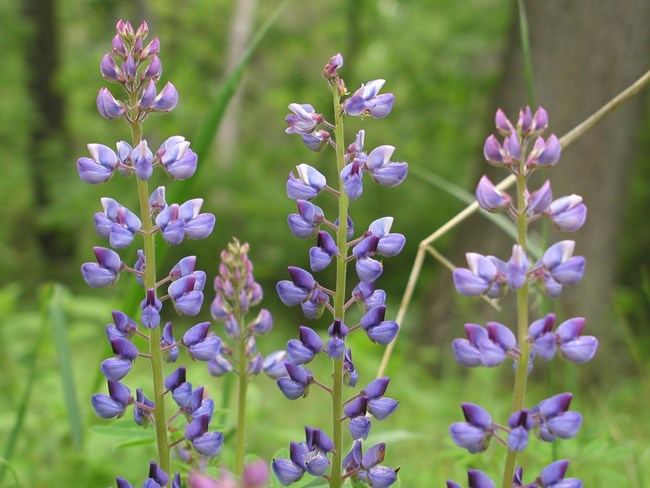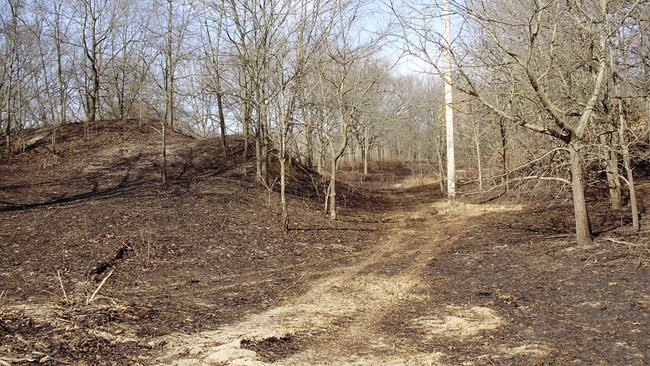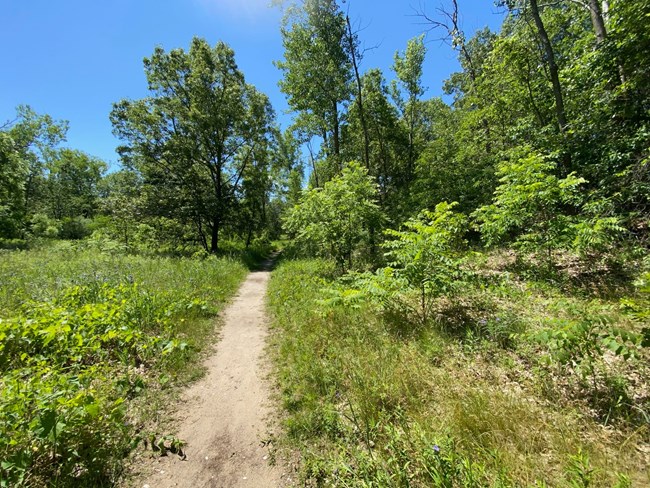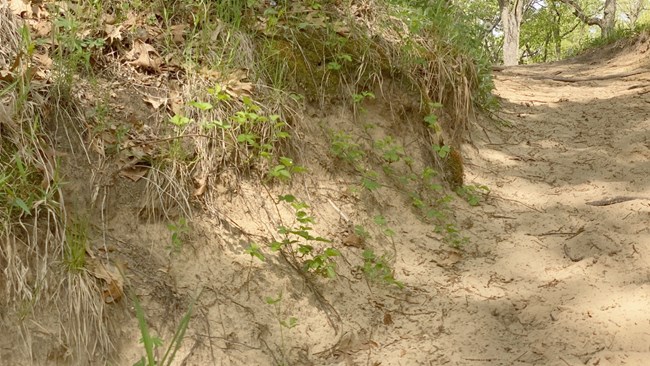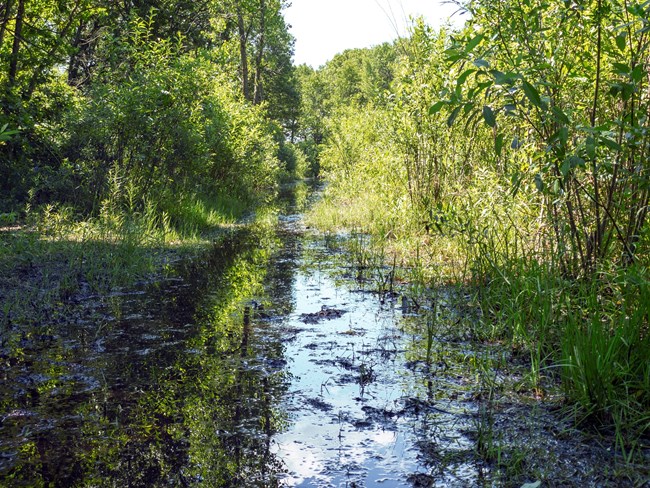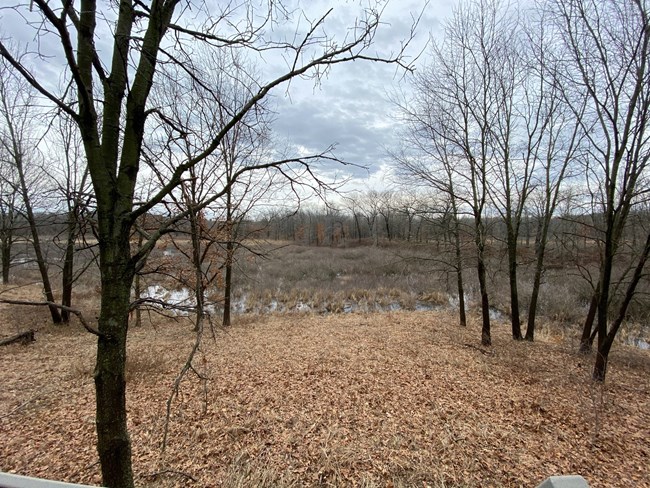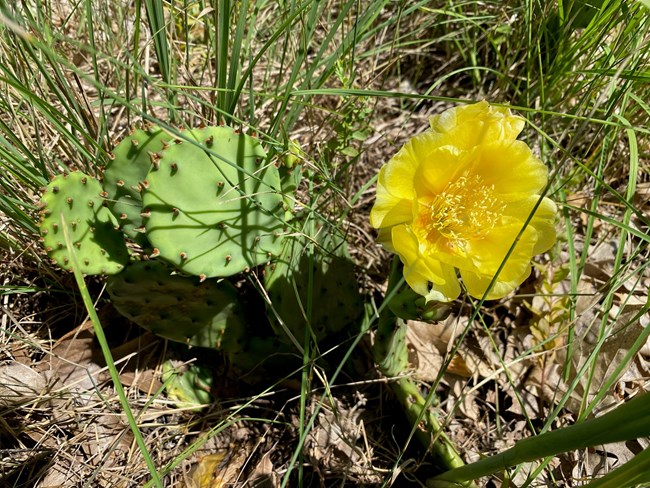
NPS Photo/Wesley Butler OverviewThe Tolleston Dunes Trail follows an old shoreline of Lake Michigan that was formed over 4,700 years ago when the lake was 25-feet higher than today. Today, the Tolleston Dunes is showcase for a wide variety of habitats, beautiful spring ephemerals, and a globally rare black oak savanna. Use this explorers page, virtually or by visiting the site, to learn more about the Tolleston Dunes. Objectives
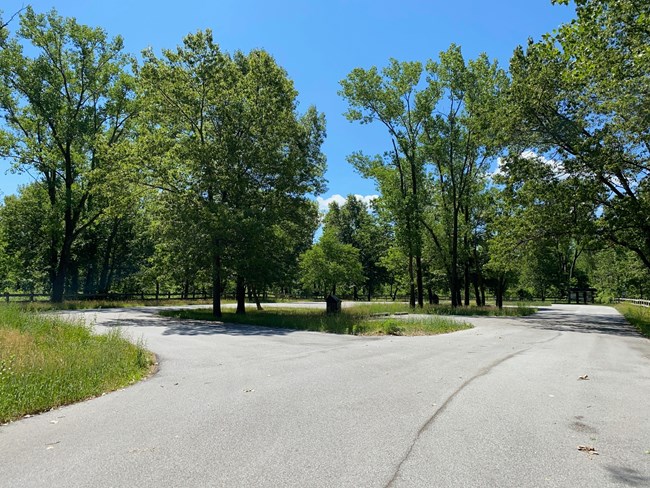
NPS Photo/Steven M. Rossi #1: Describe the topography of the parking lot. As you walk the first portion of the trail, how does the topography differ from east to west?
|
| R | K | Z | M | L | D | D | Z | B | Y | K | P | N | J | S | X |
| J | Q | P | V | X | K | D | M | H | Y | D | D | J | N | Y | D |
| T | Q | M | A | D | P | N | Q | M | A | M | R | R | V | L | L |
| N | R | N | M | R | W | G | L | T | D | B | U | R | T | Z | R |
| D | G | T | D | J | A | T | V | D | Y | B | I | L | R | G | Q |
| O | J | J | G | L | Y | B | W | Y | D | G | M | T | N | G | K |
| W | A | R | M | T | R | N | O | E | P | W | M | I | Z | R | B |
| E | D | K | K | Z | N | K | B | L | M | B | N | T | V | T | D |
| T | J | T | S | N | V | I | M | J | I | I | V | T | L | L | M |
| L | M | Y | N | A | R | K | J | G | M | C | D | V | K | J | Z |
| A | Y | R | X | C | V | B | R | D | Y | G | D | B | T | X | P |
| N | B | Y | S | N | B | A | N | G | Q | T | P | U | T | Z | X |
| D | G | E | M | J | B | A | N | M | P | M | R | Q | N | N | M |
| W | R | Q | Z | N | S | Y | T | N | K | Y | Q | Z | G | E | G |
| P | Y | V | J | M | T | P | R | Q | A | Y | X | V | R | Q | S |
Vocabulary Words:
Habitat – a place where something lives
Wetland – an area of land that has water part of the year
Oak Savanna – Landscape that has few oak trees, providing partial shade, allowing more than 50% of sunlight to reach the ground
Parabolic Dunes – U-shaped sand dune formed by wind
Prescribed Burns – burns performed by the National Park Service to help maintain an ecosystem
Sand Mining – digging and hauling away of sand dunes
Tolleston Plant Life Crossword Puzzle

ACROSS
3. Over 450 insects are known to feed off some part of this plant, but it is best known for attracting Monarch Butterflies.
8. The yellow petals of the flower are a stark contrast to the red roots of this flower.
9. This flower produces a lot of nectar which makes it an excellent source of food for butterflies.
10. Produces a delicious fruit for jams, drinks, and desserts.
11. This violet-blue flower has 3 petals. The flowers are in clumps and only a few of them open each day, for only one day.
12. This flower produces a nectar that attracts long-tongued insects and hummingbirds. Its petals look like a drooping bell.
DOWN
1. A food for many butterfly larvae including the Karner Blue Butterfly.
2. Produces white flowers in the early spring which turn into dark pea-sized fruit by late summer.
4. This flower loves growing in wet places with slightly acidic soil.
5. This flower's head can contain anywhere from 20-25 white-yellow flowers. Its leaves appear lacy and fern-like.
6. Known for making a great tea.
7. Can be showy (false) or true.
Share your explorations with us on Facebook, Instagram, or Twitter using #INDUexplorers, and be sure to tag the location in your photos and answers.
Send us your answers and additional observations now
Printer-Friendly Version
Tolleston Dunes Exploration
1. Describe the topography of the parking lot. As you walk the first portion of the trail, how does the topography differ from east to west? Do you think this is natural or man-made?
2. Sounds change throughout the year. As you near the first junction, close your eyes and listen. What sounds do you hear?
3. In the springtime, this beautiful flower is scattered across the landscape. Can you name what it is? What colors do you see along your hike?
4. Prescribed burns are vital to maintain the health of an oak savanna. Do you see any signs of recent or past fires?
5. Today, prevailing storm winds come from the North. This is seen in the north-south, U-shape of the dunes along today’s shoreline. When Tolleston was the shoreline, however, the dominant wind was west-northwest. As you hike along the trail, do you see any evidence of the dune ridges at Tolleston forming in different cardinal directions from today’s shoreline?
6. As you hike upward, look at the intricate network of roots and rhizomes holding the various plants in place. This complex network holds the dune together. As plants decompose, they provide nutrients to the ground, allowing larger plants like black oak trees to grow. How thick is the darkest layer of soil, or humus?
7. In between the dune ridges are low-lying areas that collect water. These are called wetlands. Portions of the trail take you through these wetland areas. What is the condition of the trail? Are there places more saturated with water than others?
8. The wetlands at the Tolleston Dunes are host to a wide variety of wildlife including migratory birds. What birds do you see or hear while hiking the trail? Are any of them aquatic?
9. Often thought to only grow in the desert, this eastern rickly-pear cactus loves the sandy soil and sun-filled clearings of the savanna at Tolleston Dunes. Have you seen any along your hike? How tall are they?
Share your explorations with us on Facebook, Instagram, or Twitter using #INDUexplorers, and be sure to tag the location in your photos and answers.
Take a Virtual Tour
Join Ranger Rafi as explains the wonders of the Tolleston Dunes Trail.
Grab a Trail Map
Great need-to-know information you'll be glad you snagged before taking your own Tolleston Dunes Trail hike.
Last updated: July 22, 2021


